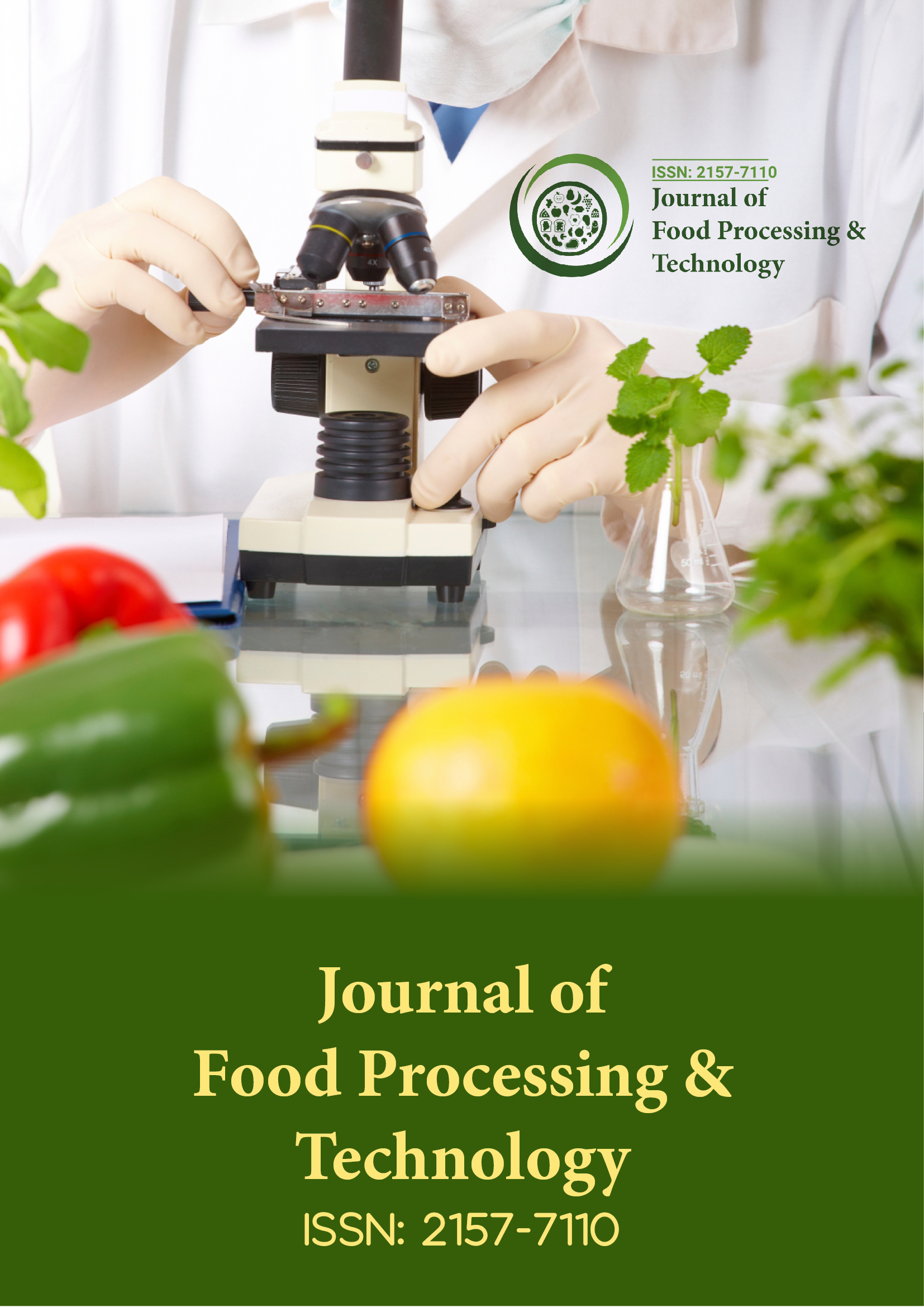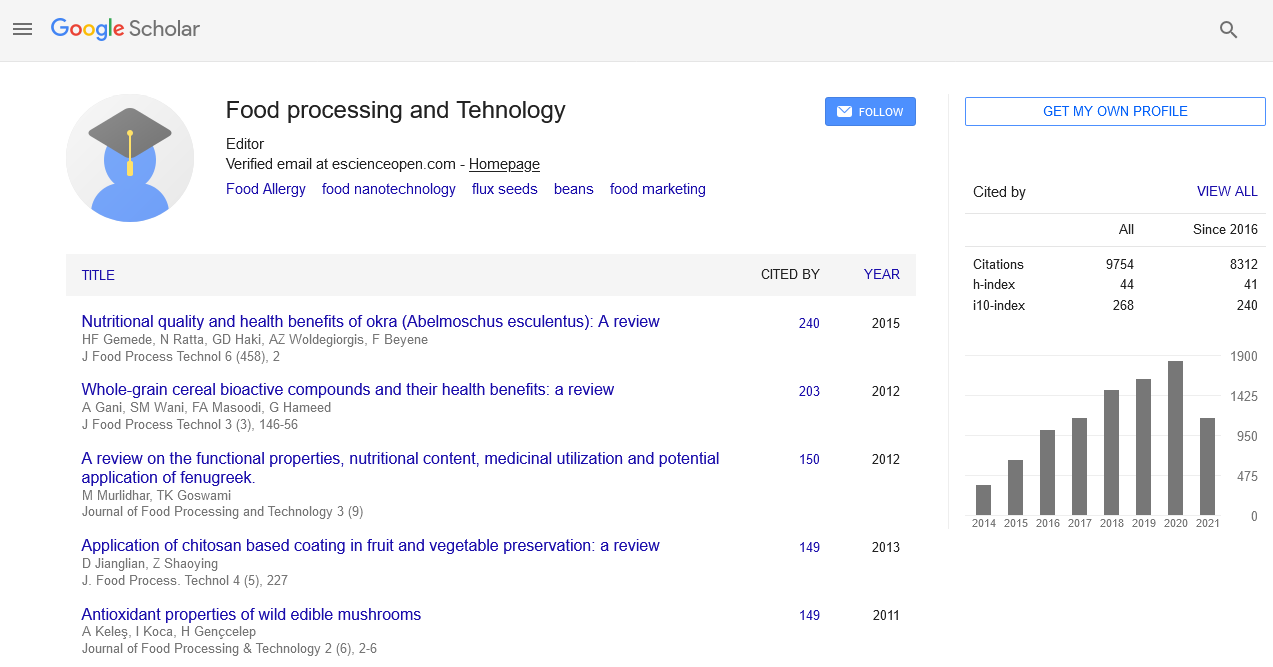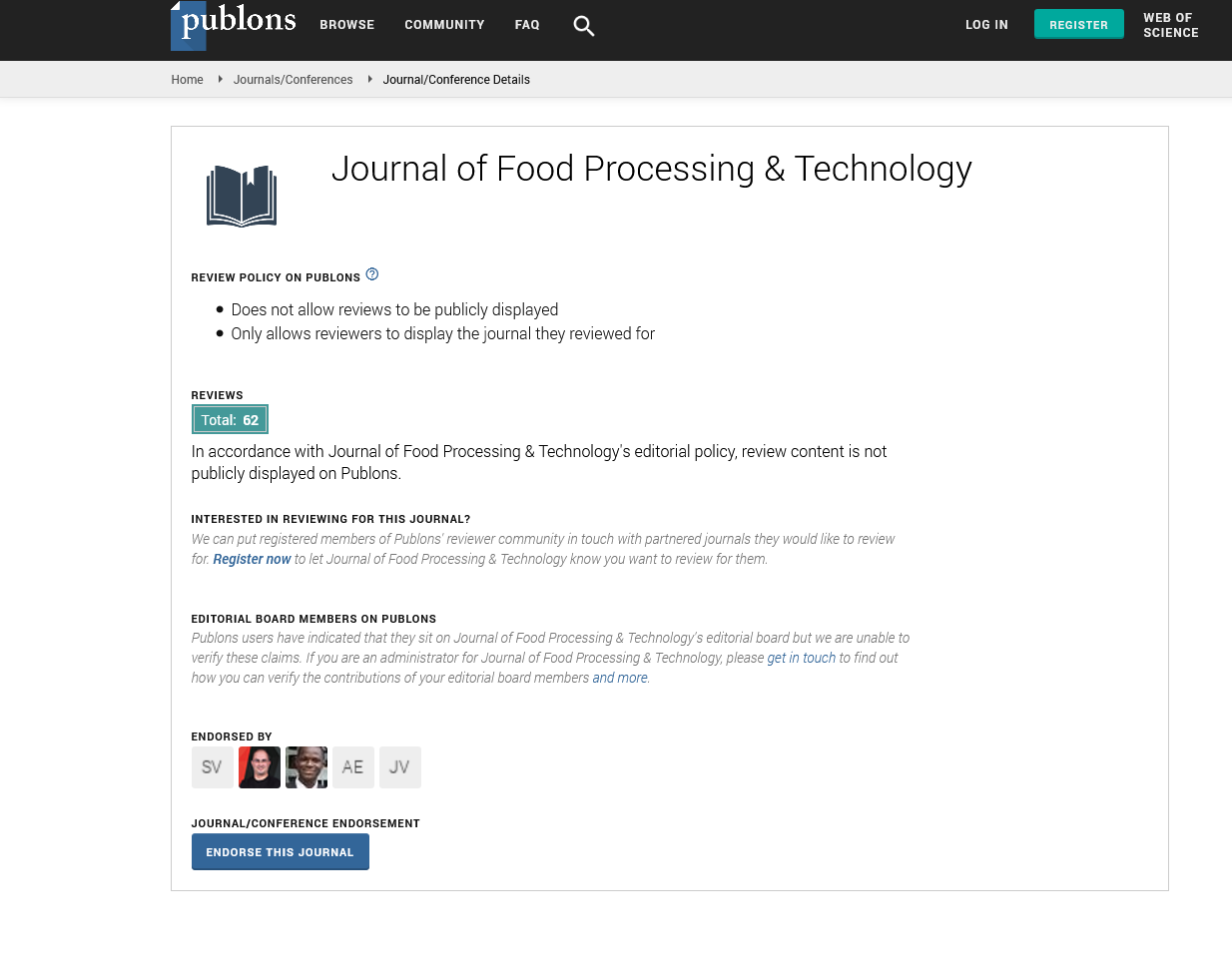Indexed In
- Genamics JournalSeek
- Academic Keys
- JournalTOCs
- China National Knowledge Infrastructure (CNKI)
- Access to Global Online Research in Agriculture (AGORA)
- Centre for Agriculture and Biosciences International (CABI)
- RefSeek
- Directory of Research Journal Indexing (DRJI)
- Hamdard University
- EBSCO A-Z
- OCLC- WorldCat
- Scholarsteer
- SWB online catalog
- Publons
- Euro Pub
- Google Scholar
Useful Links
Share This Page
Journal Flyer

Open Access Journals
- Agri and Aquaculture
- Biochemistry
- Bioinformatics & Systems Biology
- Business & Management
- Chemistry
- Clinical Sciences
- Engineering
- Food & Nutrition
- General Science
- Genetics & Molecular Biology
- Immunology & Microbiology
- Medical Sciences
- Neuroscience & Psychology
- Nursing & Health Care
- Pharmaceutical Sciences
Perspective - (2023) Volume 14, Issue 11
Evaluating Disinfectants for Combatting Multispecies in Food Processing
Jessica Maria*Received: 30-Oct-2023, Manuscript No. JFPT-23-24197; Editor assigned: 02-Nov-2023, Pre QC No. JFPT-23-24197 (PQ); Reviewed: 15-Nov-2023, QC No. JFPT-23-24197; Revised: 22-Nov-2023, Manuscript No. JFPT-23-24197 (R); Published: 29-Nov-2023, DOI: 10.35248/2157-7110.23.14.1067
Description
Food processing is a complex technology that requires multiple steps for the production of safe and healthy food from raw materials. To ensure that products meet the safety and quality standards, various techniques have been developed to control microbial populations in food processing environments. One of these methods is the use of disinfectants, which are chemical substances used to kill or inhibit the growth of microorganisms. Disinfectants play a critical role in controlling multispecies biofilms in food processing environments by reducing their number and preventing their multiplication. Biofilms are communities of microorganisms that attach themselves to surfaces and form thick layers at interfaces between different materials, such as metal surfaces or pipes. The presence of biofilms may increase the risk of contamination with harmful bacteria, resulting in potential food safety hazards. To reduce the risk of contamination associated with biofilm formation, it is important to understand how disinfectants interact with multispecies biofilms in food processing environments. This article will investigate the role of disinfectants in controlling multispecies biofilms in food processing environments by examining their efficacy against different types of biofilms and exploring strategies for effective application.
Food processing environments are essential for ensuring food safety and hygiene. To ensure the food products remain safe from contamination, it is necessary to use disinfectants to control multispecies biofilms. Disinfectants can be classified into two types-chemical and physical. Chemical disinfectants are substances that are used to destroy microorganisms, whereas physical disinfectants involve physical methods such as boiling, ultraviolet (UV) radiation, filtration or ozone gas. Among the various chemical disinfectants available, sodium hypochlorite is the most widely used. It is effective against a wide range of microorganisms including both gram-positive and gram-negative bacteria, fungi, yeasts and spores. Another commonly used chemical disinfectant is chlorine dioxide which has been shown to be highly effective against a range of biofilms. It has been found to be more effective than sodium hypochlorite in controlling multispecies biofilms due to its greater ability to penetrate biofilm structures.
Besides chemical disinfectants, physical methods such as heat or cold temperature treatment have also been successfully employed in controlling multispecies biofilms in food processing environments. Heat treatments such as pasteurization or High- Temperature Short-Time (HTST) processes have proven efficacy against bacterial spores while cold temperature treatments such as cryogenic processing may be useful in controlling yeasts and fungi. Filtration processes have also been found to be effective in removing microorganisms from liquids while ultraviolet radiation has been shown to be very effective in destroying bacteria and viruses present on surfaces. Ozone gas is another promising technology for controlling multispecies biofilms because of its broad spectrum activity against a wide range of microbes including bacteria, yeasts and fungi. The use of disinfectants in food processing environments has become increasingly important in recent years as technological advances have enabled the development of multispecies biofilms. Disinfectants are used to kill existing microbial growth, sanitize equipment, and reduce the spread of contamination between different types of food products. While such measures can be beneficial for controlling the spread of infection, they can also present certain challenges. In this article, we will explore the role that disinfectants play in controlling multispecies biofilms in food processing environments and the potential benefits and drawbacks associated with their use. Multispecies biofilms are complex communities of bacteria and other microorganisms that form on surfaces within a food processing environment. These films can quickly become thick deposits that contain many different species, including pathogenic organisms. As such, it is important to maintain strict sanitary conditions within a food processing environment to prevent contamination from occurring. Disinfectants can help to reduce the presence of biofilm-forming organisms, making it easier to keep surfaces clean and free from contamination. One key benefit of using disinfectants in food processing environments is that they provide an effective method for killing microbes and reducing bacterial populations on surfaces without relying on harsh chemicals or manual cleaning methods. Additionally, many commercial disinfectant products feature broad-spectrum activity against multiple types of pathogens, allowing them to be used as a preventative measure against cross-contamination between different types of food products. As such, using disinfectants in food processing environments can help to ensure that customers receive safe, uncontaminated products every time they shop at store or restaurant.
Citation: Maria J (2023) Evaluating Disinfectants for Combatting Multispecies in Food Processing. J Food Process Technol. 14:1067.
Copyright: © 2023 Maria J. This is an open access article distributed under the terms of the Creative Commons Attribution License, which permits unrestricted use, distribution, and reproduction in any medium, provided the original author and source are credited.


